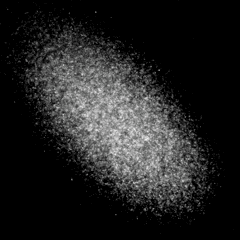PhD defense on October 18th, 2018, 2:30pm, at the PMMH meeting room (Sorbonne Université, Barre Cassan, Bât. A 1er Étage, 7 Quai Saint Bernard, 75005 Paris).
Acoustic confinement of Escherichia coli: The impact on biofilm formation
 Brownian or self-propelled particles in aqueous suspensions can be trapped by acoustic fields generated by piezoelectric transducers usually at frequencies in the Megahertz. The obtained confinement allows the study of rich collective behaviours like clustering or spreading dynamics in microgravity-like conditions. The acoustic field induces the levitation of self-propelled particles and provides secondary lateral forces to capture them at nodal planes. Here, we give a step forward in the field Continue reading “PhD defense: Salomé Gutiérrez-Ramos. Acoustic confinement of Escherichia coli: The impact on biofilm formation”
Brownian or self-propelled particles in aqueous suspensions can be trapped by acoustic fields generated by piezoelectric transducers usually at frequencies in the Megahertz. The obtained confinement allows the study of rich collective behaviours like clustering or spreading dynamics in microgravity-like conditions. The acoustic field induces the levitation of self-propelled particles and provides secondary lateral forces to capture them at nodal planes. Here, we give a step forward in the field Continue reading “PhD defense: Salomé Gutiérrez-Ramos. Acoustic confinement of Escherichia coli: The impact on biofilm formation”

